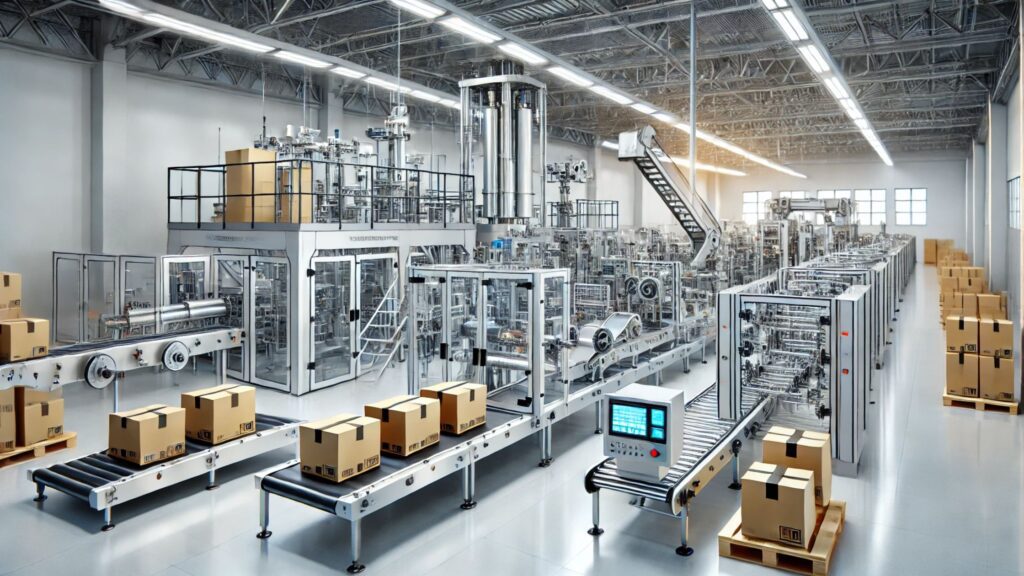In the fast-paced world of manufacturing and logistics, efficiency is key. Secondary packaging machinery plays a crucial role in ensuring products are securely packaged, efficiently handled, and ready for distribution. But what exactly is secondary packaging, and why is investing in advanced secondary packaging machinery so important?
What is Secondary Packaging?
Secondary packaging refers to the packaging that surrounds primary packaged products to facilitate handling, transportation, and branding. Unlike primary packaging, which is in direct contact with the product (such as bottles, cans, or blister packs), secondary packaging includes cartons, boxes, shrink wraps, and trays that hold multiple units together.
The Role of Secondary Packaging Machinery
Secondary packaging machinery automates the process of grouping, wrapping, and boxing products, significantly improving efficiency and reducing labor costs. Some of the key types of secondary packaging machines include:
- Cartoning Machines – These machines automatically assemble, fill, and seal cartons, streamlining the packaging process.
- Shrink Wrappers – Used to tightly encase products in plastic film, providing protection and stability.
- Case Packers – These machines pack products into cases or trays, ensuring safe transport and storage.
- Palletizers – Automate the stacking of packaged goods onto pallets, reducing manual labor and enhancing load stability.
- Labeling and Coding Machines – Essential for applying barcodes, labels, and date codes for tracking and regulatory compliance.
Benefits of Investing in Secondary Packaging Machinery
1. Increased Efficiency and Speed
Manual packaging is time-consuming and prone to errors. Automating the process with secondary packaging machinery increases speed, reduces downtime, and enhances overall productivity.
2. Cost Savings
While the initial investment in packaging machinery may seem high, the long-term savings in labor, material waste, and product damage make it a cost-effective solution.
3. Improved Product Protection
Proper secondary packaging prevents damage during handling and transportation, ensuring that products reach customers in pristine condition.
4. Compliance and Standardization
With automated packaging, businesses can maintain consistency in packaging size, labeling, and weight, ensuring compliance with industry and regulatory standards.
5. Enhanced Brand Presentation
Secondary packaging serves as a marketing tool, with well-designed cartons and wraps reinforcing brand identity and attracting customers.
Choosing the Right Secondary Packaging Machinery
When selecting secondary packaging machinery, businesses should consider factors such as production volume, product type, scalability, and budget. Partnering with reputable machinery manufacturers ensures access to high-quality, reliable equipment that meets specific operational needs.
Conclusion
Investing in secondary packaging machinery is a smart move for businesses looking to streamline operations, cut costs, and enhance product protection. As technology continues to evolve, adopting advanced automation solutions will remain a key driver of success in the packaging industry.
Are you looking to upgrade your packaging operations? Explore the latest innovations in secondary packaging machinery to stay ahead in the competitive market.
Related Articles
- The Art and Science of Packaging | Trends, History & Future
- Secondary Packaging in Pharmaceutical Industry: Importance & Innovations
- What Is Secondary Packaging? The Essential Guide for Businesses
- The Ultimate Guide to Popcorn Packaging: Innovation, Trends, and Sustainability
- The Art and Science of Honey Packaging: A Guide to Preserving Nature’s Sweetness
- The Future of Takeaway Packaging: Sustainable and Innovative Solutions
- What Is Primary Packaging? A Complete Guide
- The Future of Manufacturing: Primary Packaging Automation
- Chocolate Primary Packaging: Ensuring Freshness, Safety, and Appeal
- Pharmaceutical Primary Packaging: Ensuring Safety and Efficacy

